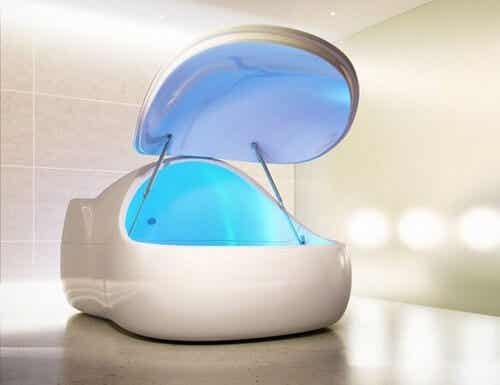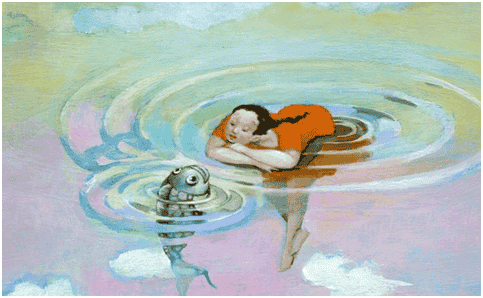Currently, sensory isolation tanks are found almost everywhere, available to anyone who wants to use them. Enthusiasts compare the experience to returning to the mother's womb. The mind is freed and definitely rests.

Last update: June 12, 2020
They call it a sensory deprivation tank or floating and it comes back into fashion every other time. Although it was invented for the purpose of studying the brain, today it is used as a relaxation method. There are specialized companies that offer this type of experience, but it is also possible to use it in different spas.
Those who promote sensory deprivation tubs argue that it is an experience comparable to returning to the mother's womb. Probably the comparison is risky, but it is clear that those who often use this device consider it a unique experience. Apparently, it allows you to enter a state of absolute relaxation.
The device also has its detractors. There are those who enter the sensory deprivation tank with certain reservations, as totally breaking contact with the outside world produces some anguish. Those who manage these flotation tanks say that it is necessary to enjoy mental stability and maturity to be able to live the experience to the fullest.
While much of what we perceive comes to us through the scent of the objects around us, another part (perhaps the most important) always comes from our mind.
-William James-
The invention of the sensory deprivation tank
The sensory deprivation tank is the brainchild of John C. Lilly, an American neuropsychiatrist. His goal was to run a successful business. His aim was to study the changes produced in the brain in a condition of extreme isolation.
It was the 50s and these topics caught the attention of many scientists. Just then Lilly designed devices that he dubbed "sensory deprivation chambers," that is, devices that minimized the activity of all the senses.
Lilly found that through these devices it was possible to have a very special experience. Staying for a certain period of time inside these rooms produced a very relaxing and regenerating sensation. However, his studies were not taken particularly seriously, as Lilly was considered, above all, an eccentric eager for attention.
New research studies
Although the topic was not considered relevant at the time, interest increased over time. Experiments with sensory deprivation reservoirs began at several locations and it emerged that perhaps this was not just a simple Lilly oddity., but rather a means that could have been applied in the therapeutic field.
At first these tanks were studied for military purposes. Their potential for strengthening the body and mind seemed evident and several Marines tried them. Later, NASA employed these float tanks as part of astronaut training.
Starting in the 70s, the use of sensory deprivation reservoirs began to spread. The first of all to use it were professional athletes, who found its usefulness during the phases of muscle recovery. Later, the devices were absorbed into the wellness market. In a world of stressed-out people, they presented themselves as a great deal.
What does a sensory deprivation tank look like?
It is a sort of basin with a capacity that varies between 400 and 600 liters of water. At least half of this volume is occupied by so-called Epsom salts or magnesium sulfate. The high concentration of salts causes the whole body to float naturally. This is a similar effect to that produced by the Dead Sea.
The water maintains a temperature similar to that of the human body, so diving feels neither cold nor hot. In some cases, the device has a hatch that closes. In this way, the user remains inside the tub, floating in total darkness and without any auditory stimulus.
Other fluctuation tanks do not close. They have a hatch that remains open, but the light around them is extremely dim and the environment is soundless. In general, those who immerse themselves in a sensory deprivation tank remain in this state for between 60 and 120 minutes.
The positive effects of the sensory deprivation tank
Everything suggests that the use of these fluctuation reservoirs stimulates positive changes in the brain. It sets in motion a different activity than usual, very similar to that obtained with the states of meditation. For this reason it is a very relaxing experience.
At the same time, diving into one of these pools has been proven to improve our health. In particular, it helps to calm any type of muscle pain and prevents frequent problems, such as migraines or menstrual colic. Finally, it reduces states of anxiety.
We also report that this experience stimulates creativity and increases intellectual skills. Most of those who use the sensory deprivation tanks are pleasantly surprised. A minority, on the other hand, find the experience boring and even annoying. What's more, it doesn't seem to have any side effects, so why not give it a try?


























